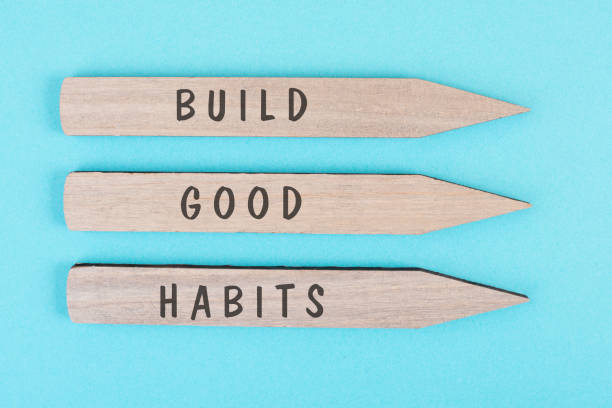As thoughts begin to turn from planning picnics and BBQ’s to planning school lunches, our parental priorities shift from “summer fun” to “get it done.” The back-to-school transition helps set the stage for a successful school year. It is a great opportunity to help equip kids with the tools they’ll need for a smooth start. But for parents and caregivers of neurodivergent students, this time of year can feel especially overwhelming, as it is so much more than just pencils and pens that our students need. In fact, parents of children who have learning and thinking differences are more likely than other parents to say they feel stressed (39% vs. 28%, respectively), unprepared (19% vs. 12%), scared (17% vs. 9%), and/or lonely (10% vs. 3%) when it comes to back-to-school season. This week, I’ll share practical tips for how you can survive and thrive during this back-to-school season.
lunches, our parental priorities shift from “summer fun” to “get it done.” The back-to-school transition helps set the stage for a successful school year. It is a great opportunity to help equip kids with the tools they’ll need for a smooth start. But for parents and caregivers of neurodivergent students, this time of year can feel especially overwhelming, as it is so much more than just pencils and pens that our students need. In fact, parents of children who have learning and thinking differences are more likely than other parents to say they feel stressed (39% vs. 28%, respectively), unprepared (19% vs. 12%), scared (17% vs. 9%), and/or lonely (10% vs. 3%) when it comes to back-to-school season. This week, I’ll share practical tips for how you can survive and thrive during this back-to-school season.
Adjust Expectations
As the parent or caregiver of a student with unique learning needs, you know that being flexible is essential. Why not give yourself that same space (and grace) to be able to NOT do it all, and remain flexible with what you’d like to accomplish? Setting too many goals at once – “I’ll arrange playdates every weekend,” “We will eat breakfast as a family every day,” or “I’ll volunteer 5 hours in the classroom” – can feel overwhelming to both you AND your child.
Families living with ADHD can be especially sensitive to changes in routines. When new tasks are thrown into existing ones, confusion and frustration often come along for the ride. This year, consider viewing back-to-school tasks through the lens of what is truly important to your family’s needs. Instead of one long “to-do” list to slog through, focus on one or two things that are truly important for your family right now. By limiting your goals and adjusting your expectations, you’ll minimize pressure on everybody and reduce family stress.
Start Preparations Now with Low-Key Conversations
Now is a great time to begin easy conversations about returning to school – asking what your child is most excited about doing or seeing when they go back, what foods they look forward to in their lunchbox, who they’ll high-five first, etc. These are no-pressure conversations that signal change is afoot. Start with “Tell me what you know about….” this new grade or this new school. You’ll get a sense of their level of understanding and be better prepared to meet them where they are.
By pairing these conversations with visual cues at home such as a countdown calendar, displaying photos of familiar school staff and classmates, meeting their teacher or walking the hallways of a new school, you’ll help make going “back to school” seem less frightening and more familiar. These conversations are just as important with college age students so set aside some time to start now!
Set a Positive Course with Collaboration
Setting a positive course for this year depends on collaborating with your son or daughter to establish clear goals and useful strategies. Kids with ADHD spend a lot of time listening to what they could do differently from caring adults, friends,

coaches, etc. By including some of their opinions in whatever program you create, you increase their buy-in. When they feel like their ideas matter, these kids are far more likely to cooperate. So, start this school year with a calm, honest family conversation.This chat sets the tone for how you will work together to make it a success.
Take the Time to Reflect First
Before you sit down with your son or daughter, consider your responses to these questions:
- What do you hope for your child or teen this year?
- What went well last year and why?
- Can you identify any behaviors or decisions that made a positive difference?
- What were some of the challenges? What improved them?
When you’re ready for your conversation, ask them similar questions. Offer some of your reflections and see if you can agree on some goals for this fall. Write these down and, together, choose one to start with. It can be fun to treat this as a “time capsule” too: make a copy and place it in an envelope to be opened at the end of the semester. Then you can review how things actually worked out–the successes and the challenges.- kept in an envelope until the end of the year (or month, semester, etc.), then reviewed together and discussed.
Practice time management skills now
Many children who are neurodivergent struggle with time and get frustrated.This makes morning routines tricky and causes conflict.

It’s harder for them to feel time, plan for things accordingly and then actually do them. They tend to overestimate how long a task will take and how much effort it entails. Then they feel overwhelmed, procrastinate or avoid it altogether. Or, they underestimate how long a task will take and the effort involved. Then they leave things until the last minute, rush to complete them and feel very stressed in the process.
Use Backwards Design to Teach Time and Planning Skills
When planning school schedules, practice using backwards design with your child to help them plan – in reverse – for where they want to be (or want to have done) in the future. This means working backwards by starting with the end goal and allocating time accordingly. Sit down in advance and review what needs to be accomplished and how long things actually take.
“You have to be at school by 7:30. It takes twenty minutes to ride your bike, lock it up and get to homeroom so that puts you at 7:10. Before that, you want to eat breakfast (ten minutes), go to the bathroom, brush your teeth and get dressed (fifteen minutes) which puts you at 6:55 am. Then you have to wake up. Usually you hit the snooze button once or twice which lasts another fifteen minutes. So that means you have to set my alarm for 6:40 if everything goes perfectly. Maybe we should set it earlier for this week, just in case.”
Backwards design benefits kids by teaching them how to estimate time, develop the ability to sequence events and improve planning and prioritizing.
Notice the Positive to Raise Self-esteem
Parents of neurodivergent children are 2.4 x’s more likely to experience challenges related to their mental health than their parent peers, making self care strategies an essential component of your back-to-school parenting toolkit. Equally important, however, is to extend these practices to neurodivergent learners with ADHD. They benefit from explicit support and instruction in identifying and incorporating positive events in their day that nurture self-esteem.
Spend a few minutes at the end of the day and check in with your child, asking “What are two things that went well today? What were your favorite times of the day?” Many kids with ADHD tend towards negative mindsets marked by internal self-criticism and judgment. Shifting their thinking not only nurtures growth mindsets but also self-care. By noticing what is working, they start to feel more confident and courageous. Set aside a time to review two highs and one low of the day. Often dinner is a good place to do this. One of my clients calls this talking about “the happy and the crappy;” for another it’s “the rose and the thorn.”
Your Self-Care Makes Family Life Stronger
Noticing the positive applies to you too. Self-care goals or guidelines for this year bc when parents are stressed kids pick it up and act out. As adults, we tend to think acts of self care look like bubble baths, a piece of chocolate, reading a book, etc. But setting boundaries, keeping organized, and lowering the pressure of unrealistic expectations also provide much needed relief. Before tending to your child, start this school year off on the right foot by reflecting on your capacity, your limits and treating yourself with compassion. Then you can show up and guide your child towards thriving once classes begin.
Ready, Set…LET’S GO!
Back to school will be a breeze for you and your child with neurodivergence when it includes collaborative conversations, time for community support, opportunities to practice time management, setting realistic expectations, and room for personal growth and positive reinforcement. Help your child or teen navigate this shift back to school by easing them into the changes ahead with the tips above, and you’ll feel ready to tackle this time of year together!










